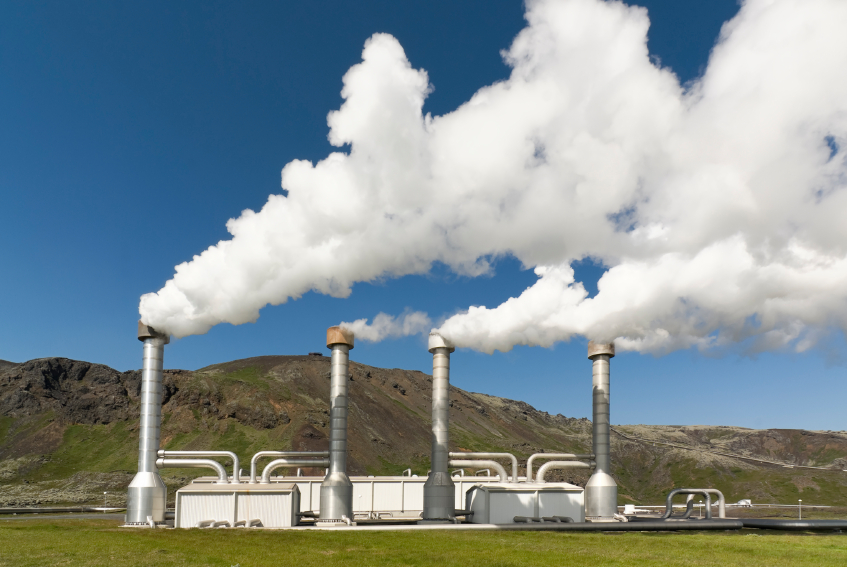BLOG ENTRY: Stirling Engine/Peltier Device
BLOG ENTRY: Stirling Engine/Peltier Device
Stirling Engine
A stirling engine is a heat engine that operates via cyclic compression. An expansion of air/another gas at different temperatures causes a net conversion of heat energy to mechanical work. It was a rival to the steam engine, and was usually used for low-power domestic applications. With that said, it’s known for high efficiency when compared to other forms of steam engines.
Steps to a stirling engine:
- Utilization of sealed cylinder with one part hot and another cold
- Working gas inside the engine, which is usually helium/hydrogen/air, is moved from the hot side to the cold side
- The gas on the hot side expands and pushes up a piston
- Gas cools down on the cool side, contracting
- Two power pulses per revolution supplies smooth energy supply
It’s able to use almost any heat source, which allows it to be compatible with a wide range of renewable fuels. This has become increasingly acknowledged as fuel costs of conventional fuels have risen.

The heat driving a stirling engine has to be transmitted from a heat source to working fluid. Each stirling engine system must have a heart source, a heat “sink,” and multiple heat exchangers. The heat source can be provided from combustion.
The key difference between this form of combustion and most other engines is that the stirling engine can run on fuels that would usually damage other engine internals. This is because the working fluid doesn’t have to come in contact with the heat source. Concentrated solar energy, nuclear energy, and geothermal energy have all been identified as uses for the stirling engine.

Despite its efficiency, the stirling engine isn’t widely used in vehicles because it’s difficult to start instantaneously. However, they still continue to have widespread use as cooling devices. If a machine is designed correctly, the stirling cooler can go as low as 10 degrees Kelvin. Micro stirling coolers have been produced for cooling infrared chips in night vision devices. Furthermore, stirling engines are still found in submarines. Expansion of their usage with greater utilization of renewable energy may be possible in the future.
Peltier Device
A Peltier device utilizes the “Peltier effect,” which is heating/cooling at an electrified crossing of two different conductors. As the current flows through the junction, heat may be generated/removed. Heat pumps utilize this concept, while thermoelectric cooling is found in refrigerators.

Steps to a thermoelectric cooler:
-
Implementation of the theory that heating and cooling effect occurs when electric current passes through two conductors.
-
Voltage is applied to the free ends of two different materials to create temperature difference
-
Peltier cooling causes heat to move from one end to another
-
As a DC current passes through one ore more pairs of elements from each side of the conductor, there is a decrease in temperature at the junction (cold side)
-
This causes an absorption of heat from the environment
-
Heat is carried through cooler by electron transport/released on opposite hot side

The thermoelectric effect is the conversation of temperature differences using electric voltage, as found in the devices mentioned prior. The effect can be used to generate electricity. The production of heat from electricity is called the Seebeck effect. The Seebeck effect can be reversed, when a direct current is sent through the circuit where two dissimilar conductors are joined. As stated in the steps, heating will take place at one of the junctions and cooling at the other.
In addition to the uses mentioned prior (heating and refrigerators), thermoelectric applications include temperature difference detection and thermal energy conversion. The coolers specifically can be used for applications that require heat removal. This can span from small amounts to several thousand watts! Both tools discussed have a wide range of modern uses, despite their creation several years ago!
References:
- http://web.archive.org/web/20080801212651/http://www.lanl.gov/mst/engine/
- http://news.bbc.co.uk/2/hi/programmes/working_lunch/3231549.stm
- http://www.explainthatstuff.com/how-stirling-engines-work.html
- http://www.economist.com/news/science-and-technology/21590877-200-year-old-invention-may-last-be-ready-market-stirling-silver
- http://science.howstuffworks.com/thermoelectricity-info.htm
- http://www.stirlingengine.com/faq/#1
- http://www.marlow.com/resources/general-faq/6-how-do-thermoelectric-coolers-tecs-work.html
One Response to BLOG ENTRY: Stirling Engine/Peltier Device